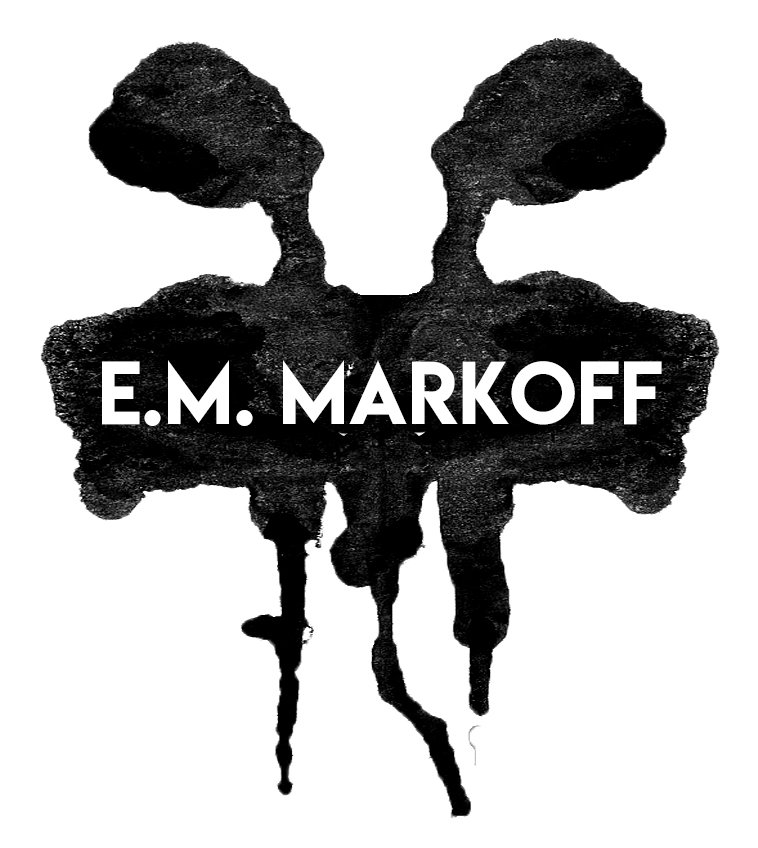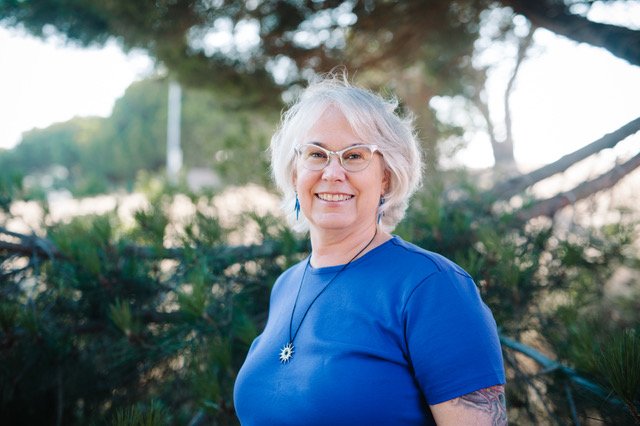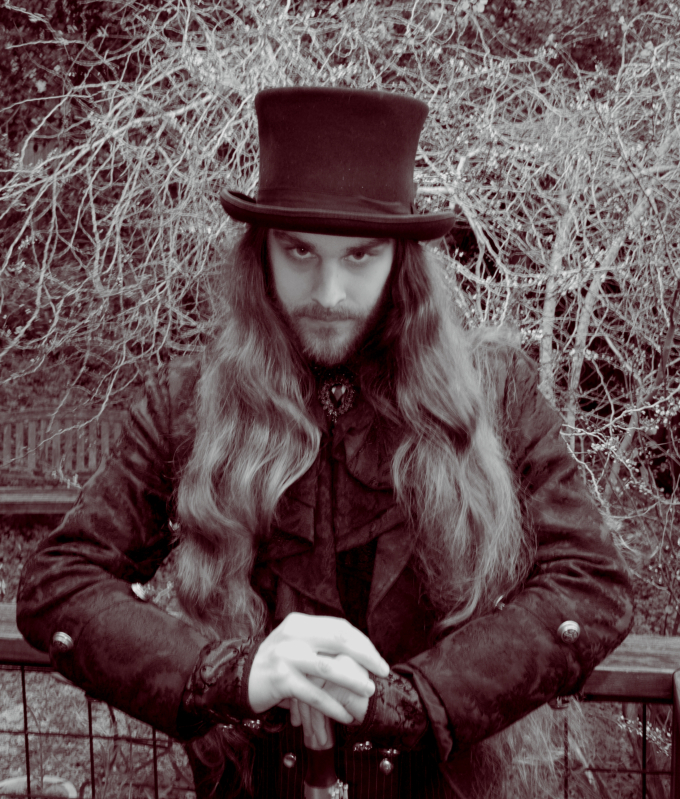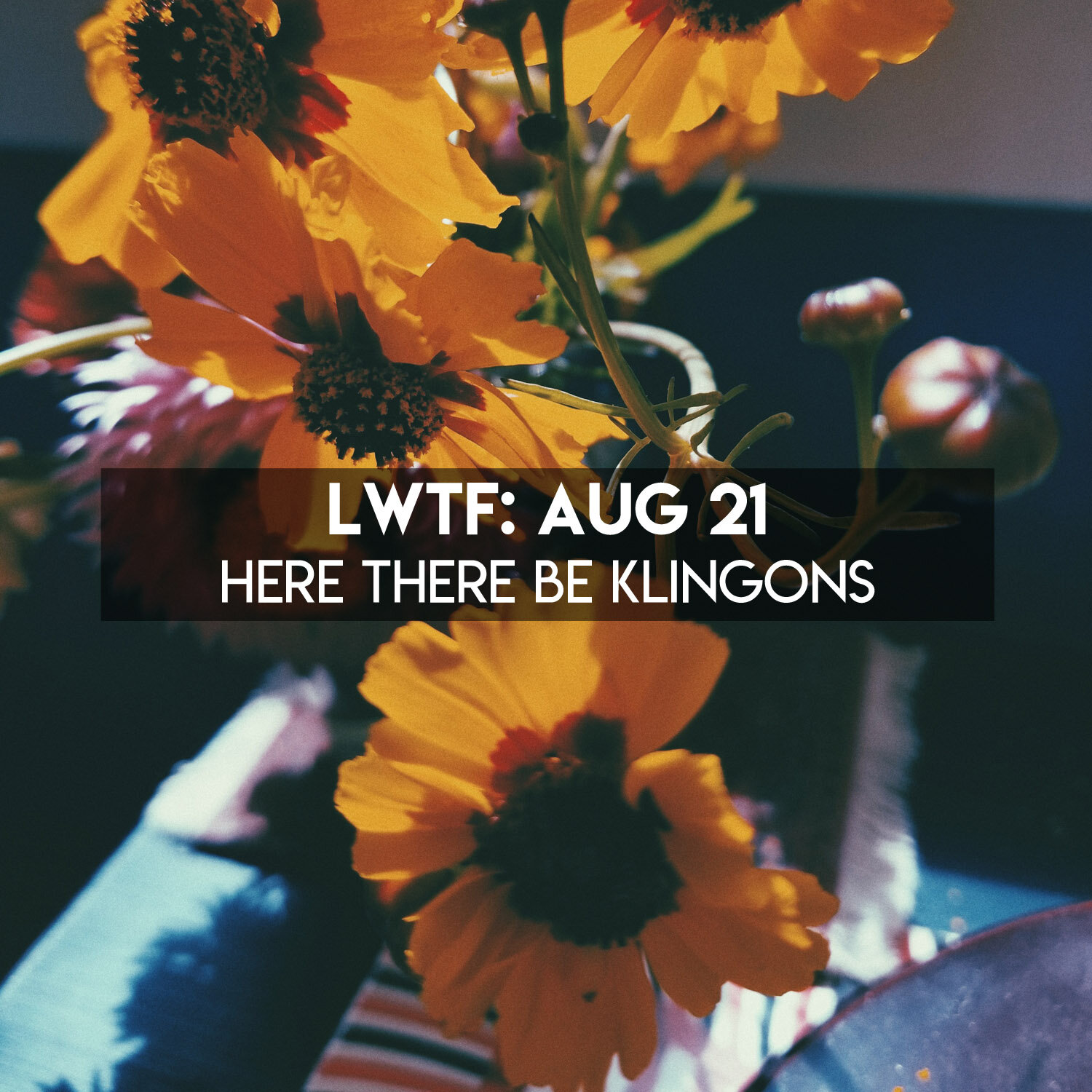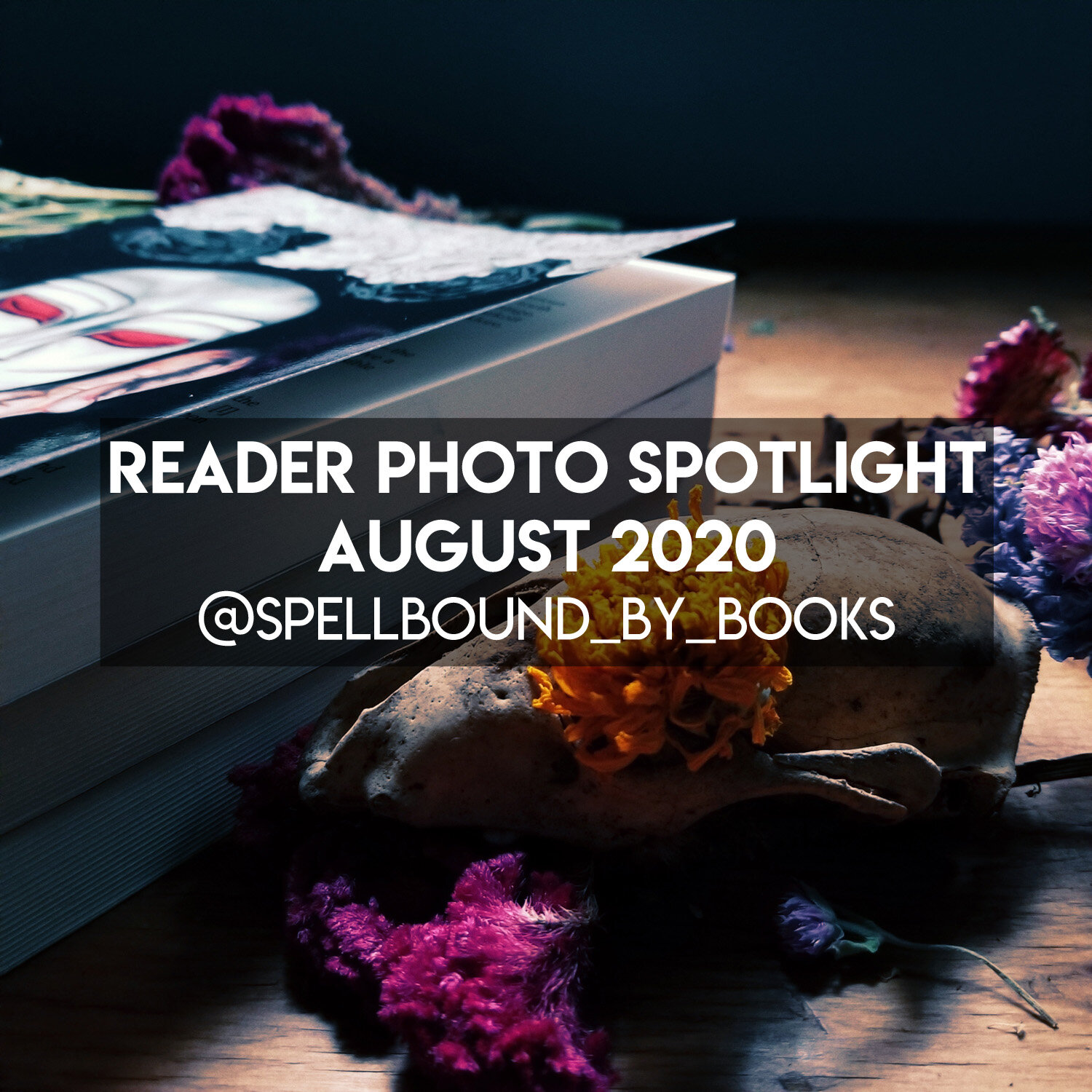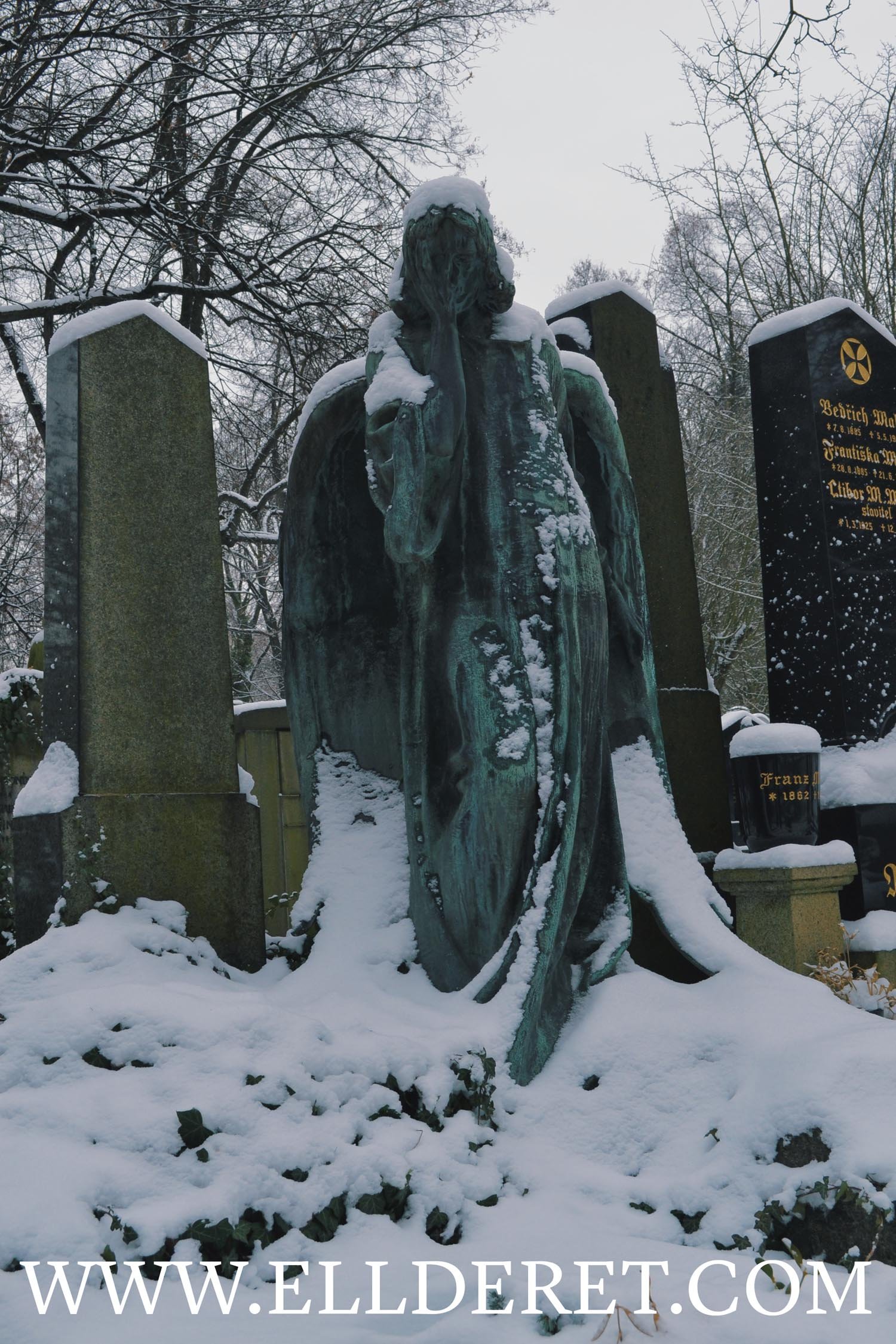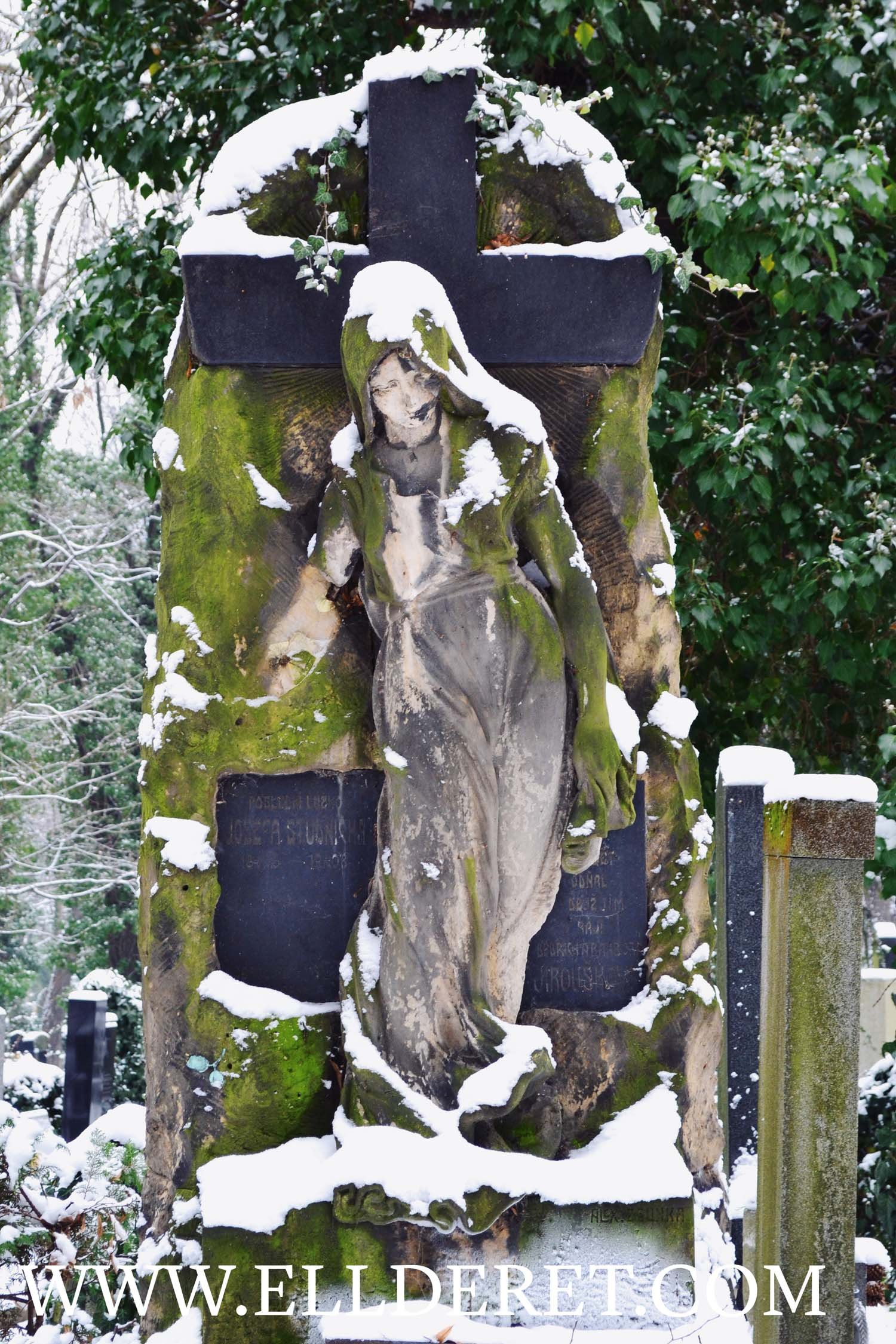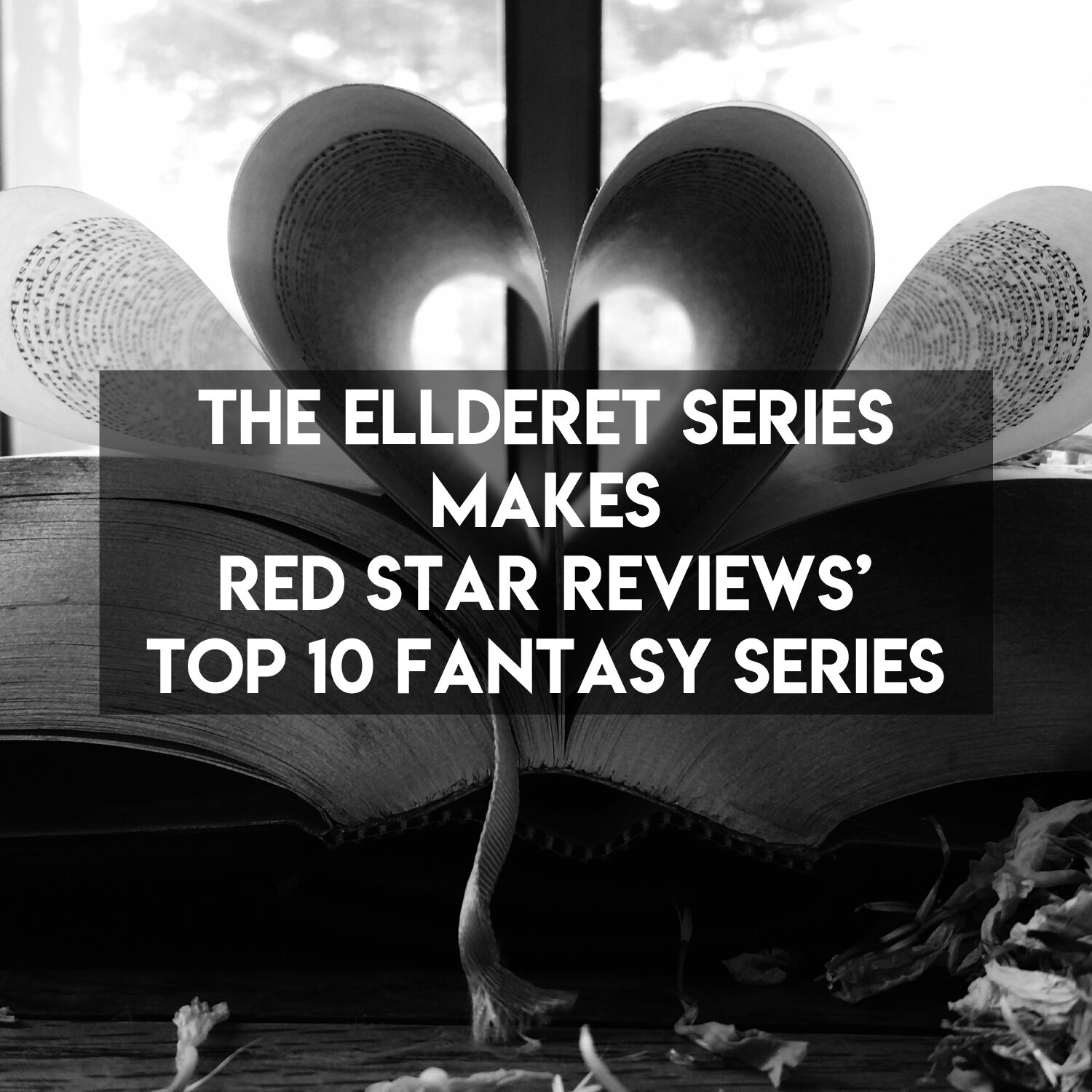Guest Post | The ‘Death’s Garden Revisited’ Playlist by Loren Rhoads
When I put together the original Death’s Garden book in the early Nineties, I worried that its subject matter would be really dark. After all, I was asking people to write about their relationships with cemeteries. Instead, the book turned into a celebration of life, family, community, and so much more.
The first book came together almost by accident. When I decided to put together a sequel all these decades later, I was much more intentional about its contents. I was looking to underline my belief that every day aboveground is a good day. Cemeteries help to put so much in perspective.
One of the most fun things I’ve done to promote the second Death’s Garden book is to assemble a playlist. I asked each of the contributors for their “favorite cemetery song” and I left it up to them to decide what that meant. Not everyone participated. Some suggested more than one song.
The song I started with, “Ain’t No Grave” by Crooked Still, sets the pace for the playlist. It’s a propulsive pop country take on the old gospel song, with tight vocal harmonies and virtuosic banjo playing over standup bass. It wears its religious roots upfront, but I love the shade of meaning it gives to the song that follows: “Pet Sematary” by the Ramones, which was written for the soundtrack of the movie based on the Stephen King novel.
Photo provided by the author | Kickstarter campaign live until April 16, 2022!
The third song, “Bury Me Face Down” by grandson, was new to me, even though the single came out in 2016. It quickly became an earworm, as have a number of the songs on the list.
As a matter of fact, I was really proud of the spectrum of songs filling the list. They span from folk songs and murder ballads through country and gospel and from rock to Goth to Industrial to classics. There are a couple of instrumentals from movie soundtracks alongside “In Memory of Elizabeth Reed” by the Allman Brothers Band and “Dreams of Wounded Knee” by Native American recording artist Bill Miller.
Some songs, like “Pet Sematary,” were suggested by several people. Some songs, like “Long Black Veil,” were suggested by multiple artists, but I felt I could only choose one version. Even though I already had Johnny Cash on the playlist for “Ghost Riders in the Sky,” I felt like I had to go with his version instead of the cover by the Bastard Sons of Johnny Cash, which was also suggested. I personally like Hugh Laurie’s take on “St. James Infirmary,” but once someone chose Louis Armstrong’s classic, I was glad to include it.
When the contributors (including E. M. Markoff!) joined me for a party on Facebook last weekend, I suggested that everyone listen to the playlist as we conversed online. Even though we were scattered across the US and Canada, the comradery and common playlist brought us together. Songs about cemeteries can make you feel good.
See for yourself by checking out the playlist on Spotify: https://open.spotify.com/playlist/4S0255SPm7grf5NShTbLgT?si=a183ec1bca4749e4
You can preorder Death’s Garden Revisited on Kickstarter until April 16: https://www.kickstarter.com/projects/lorenrhoads/deaths-garden-revisited-relationships-with-cemeteries
About the Author:
Photo provided by the author
Loren Rhoads is the editor of Death’s Garden: Relationships with Cemeteries and Death’s Garden Revisited. She’s also the author of 199 Cemeteries to See Before You Die and Wish You Were Here: Adventures in Cemetery Travel.
Book Blurb:
Genealogists and geocachers, travelers and tour guides, anthropologists, historians, pagan priestesses, and ghost hunters all venture into cemeteries in Death’s Garden Revisited.
They discover that cemeteries don't only provide a rewarding end to a pilgrimage, they can be the perfect location for a first date or a wedding, the highlight of a family vacation, a cure for depression, and the best possible place to grasp history. Not to mention that cemetery-grown fruit is the sweetest.
Spanning the globe from Iceland to Argentina and from Portland to Prague, Death’s Garden Revisited explores the complex web of relationships between the living and those who have passed before.
I'm a Contributing Author for the Kickstarter Campaign 'Death's Garden Revisited: Relationships with Cemeteries' (Project Ends 4/16)
Aside from working toward the upcoming publication of The Faceless God (ebook pre-order is now available on Amazon), I also have a short personal essay that will be published in Death's Garden Revisited by Loren Rhoads (author of 199 Cemeteries to See Before You Die). Her new book, which she is funding through Kickstarter, collects 40 powerful essays, complete with pictures, to illustrate why people visit cemeteries. This death-positive project has already exceeded its $1,000 goal and has unlocked a fair number of its stretch goals, including "online reading by contributors via Zoom"! I love reading my work to an audience and look forward to doing so in the near future.
My essay is about my trip to the Olšany Cemetery during the winter, and if you want to learn more please consider donating to the Kickstarter campaign. Pledges start as low at $5, which gets you a vintage cemetery postcard from the author’s own personal collection. The book will be in color and in addition to my essay, I’m also contributing my own pictures from the Olšany Cemetery. And because I had so many to chose from, below is a taste of what the pictures will look like. Please note that these pictures won’t be in Death’s Garden Revisited. I want to keep the pictures that are in the book a surprise :)
Only two more stretch goals remain, and if the project reaches $5k then the book release party will be held in a cemetery!! My black heart couldn’t be happier. I know Kira from the Ellderet series would totally be on board with this project; it’s most certainly his cup of coffee. Fun fact: the campaign was backed by author Brandon Sanderson -- yup, that Brandon Sanderson!
Stay tuned for a guest post from Loren Rhoads where she talks about the playlist of favorite cemetery songs she put together for Death’s Garden Revisited!
Wishing everyone a wonderful day!
EMM
¡No Manches! (Not a Book Review): As Above, So Below (Duology) by Loren Rhoads & Brian Thomas
Welcome back! I hope everyone is keeping safe and staying healthy <3 Today I’m coming at you with a book review of the duology As Above, So Below by Loren Rhoads and Brian Thomas. For longtime readers, this is not the first time you’ve seen the name “Loren Rhoads” here on my blog. But here’s the thing—I picked up the first book in the duology, Lost Angels, long before Loren and I met …
Welcome back! I hope everyone is keeping safe and staying healthy <3 Today I’m coming at you with a book review of the duology As Above, So Below by Loren Rhoads and Brian Thomas. For longtime readers, this is not the first time you’ve seen the name “Loren Rhoads” here on my blog. But here’s the thing—I picked up the first book in the duology, Lost Angels, long before Loren and I met. And lo and behold, I LOVED the book!
Fast forward a year or two (I think) to when I was tabling with Shut Up & Write and selling my books at the local Bay Area Book Festival in Berkeley, California. While there, I happened to walk by the Horror Writers Association table, of which I later became a member. It was through the HWA that I got to meet Loren—the co-author of Lost Angels. It was a fangirl moment for me, for sure!
Loren’s been a great support in my life as a writer—both on and off the pages. We put out a charity anthology together, and I even had the honor of having my name be on the blurb on the front cover to Angelus Rose, the sequel to Lost Angels!! Most definitely a career high for me as an author and a reader.
I mention all of this because I want to be clear that I went into this series (book 2 had not yet been published) as a fan, and that the review that follows contains my honest views on this series and in particular on its lead character—Lorelei.
Spoiler Free Run Down…
This paranormal romance duology is very much about enduring the consequences for choices made, which is something I really enjoyed in this story. In the first book, Lost Angels, succubus Lorelei's life takes an unexpectedly dark turn when exiled angel Azaziel possesses her with a mortal girl's soul. For me, it was Lorelei who propelled this book to the top of my paranormal romance list. Despite the situations Lorelei finds herself in, she has agency. Without giving away too much, the sequel, Angelus Rose, addresses the repercussions of her choices even as the hard truths are laid out. Check out Loren Rhoads's blog about Lorelei's role as a succubus, sex positivity, and how "in the novels, sex is—above all else—about character development," and I agree.
Genre: Paranormal romance, angel and demon romance
If you like … angels, demons, and theology in general that takes place in a modern location, all with a splash of horror
Heads up: If you do not like to read about rape, violence, or female characters that are sexually liberated, then this series may not be right for you. But know this: The above points are used not as shock value but as character growth, and they serve to further the plot. This was one of the reasons I enjoyed this series so much.
Potential Spoilers…
This part is going to focus on why I liked the book and its female lead—Lorelei the Succubus.
Lorelei was created by a world run by demonic men. And yet, despite being part of a system that compels succubi to be nothing more than a tool for Hell, she makes the best choices she can when pretty much all the choices she has available to her are bad. Lorelei has agency, yes, but it’s important to note that throughout the duology she is constantly being put in disempowering situations by Heaven and Hell. Furthermore, she is “rewarded” when she plays by the rules, a tactic further seeking to disempower her by making her believe she is the one in control. Life tends to be less shitty when you fall in line and don’t stand out.
If the choices Lorelei makes don’t pan out, she will (and is) punished, and yet she continues to fight back in her own way—and this is why I fell for both Lost Angels and Angelus Rose. The authors’ choice to show the unfiltered power structure of the world the characters inhabit helped add weight and meaning to those characters’ actions. The story becomes more than just about Heaven and Hell hating each other because of theological reasons; it becomes a story of Lorelei discovering her agency and then fighting to retain that agency in a system seeking to oppress her from both sides—Heaven and Hell.
And that’s the end of my review. I hope you’ll check these books out! If you’d like to read about the inspiration behind the power dynamic between Lorelei and her boss, Asmodeus, the author has written a post which I will be publishing tomorrow here on my blog (EDIT 9/2: Here’s the link to the post, Bad Bosses! Enjoy!!). Until then, you can visit Loren Rhoads at her website to check out her other books. Oh, and she also writes about cemeteries, so I think it’s safe to say Kira from The Deadbringer is a fan. 😎
See you tomorrow!
EMM
¡No Manches! (Not A Book Review): The City & The City by China Miéville
Spoiler Free Run Down…THE CITY & THE CITY was amazing. It's mystery meets urban fantasy. The story is told in the first person by Inspector Tyador Borlú of the Extreme Crime Squad. He is investigating a murder that will take him from his home city of Besźel to its neighboring city, Ul Qoma. Imagine a city on a glass map that was stomped on. Now, follow the nonsense cracks to draw up invisible, at times overlapping, borders to create two cities--Besźel and Ul Qoma--and two very distinct cultures. Sound convoluted? Well, it is. But it works!
Spoiler Free Run Down...
THE CITY & THE CITY was amazing. It's mystery meets urban fantasy. The story is told in the first person by Inspector Tyador Borlú of the Extreme Crime Squad. He is investigating a murder that will take him from his home city of Besźel to its neighboring city, Ul Qoma. Imagine a city on a glass map that was stomped on. Now, follow the nonsense cracks to draw up invisible, at times overlapping, borders to create two cities--Besźel and Ul Qoma--and two very distinct cultures. Sound convoluted? Well, it is. But it works!
Even though the story follows Tyador, the book is really about the two cities and the strange, strict rules that shape its people. And should a citizen breach those invisible borders, the mysterious Breach will take you away and you will never be seen again.
If you don't like meticulous description and want a fast-paced read with a clean ending, then I wouldn't recommend this book. But, if you like a well-thought-out plot with fully realized lead characters (Tyador, Beszel, and Ul Qoma--yes, the two cities are more than just background) and non-methodical solutions to solving a crime, then please check out this book.
Potential Spoilers...
My fascination with this book comes from not ever being 100% sure if the two cities were just the product of fucked-up borders and people willing to live in such a way or if there was some technology or magic at play. That everyone was willing to conform to the point where a murderer would be allowed to go free just to avoid breach was aggravating. More than once I yelled at the characters "fuck protocol and just cross the damn border!" But I feel that that frustration was very integral to the story and was what gave the characters' actions meaning, especially toward the end.
And then there's the Breach. Are they just people or are they a bit more??? It's never confirmed and that vagueness made the story for me. Personally, I like to believe that there is some lost technology at play that gives the Breach the power they have over the two cities. I like to believe that they have been removed from time.
Poor Tyador. It was literally a "you can't have your cake and eat it too" scenario. That bittersweet ending is what made the story perfect for me. Choices were made and actions followed through, but at the very essence of it all were the rules that kept the City & the City alive.
